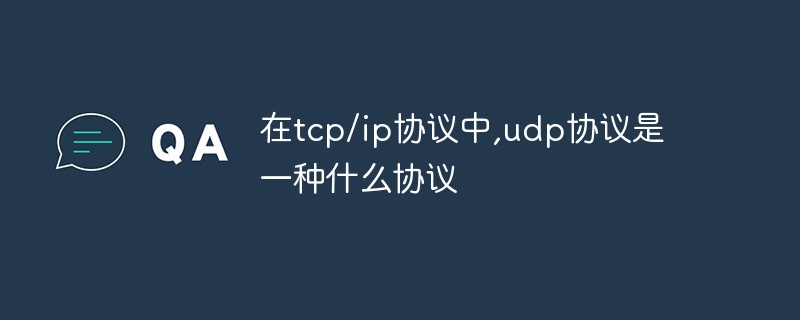
In the tcp/ip protocol, the udp protocol is a transmission protocol; the udp protocol is an unreliable connectionless protocol. It is mainly used for transmissions that do not require packets to arrive in order. The order of packet transmission is Checking and sorting are done by the application layer.

#In the TCP/IP protocol, the UDP protocol belongs to the transport layer.
The transport layer of the TCP/IP model defines two protocols: Transmission Control Protocol (TCP) and User Datagram Protocol (UDP). UDP protocol is an unreliable connectionless protocol. It is mainly used for transmission that does not require the order of packet arrival. The inspection and sorting of packet transmission order are completed by the application layer.
Related introduction:
The Internet protocol set supports a connectionless transmission protocol called the User Datagram Protocol (UDP, User Datagram Protocol). UDP provides a way for applications to send encapsulated IP packets without establishing a connection. RFC 768 describes UDP.
The Internet's transport layer has two main protocols that complement each other. Connectionless is UDP, which does little in particular except give applications the ability to send packets and allow them to architect their own protocols at the required level. The connection-oriented one is TCP, which does almost everything.
The above is the detailed content of In the tcp/ip protocol, what kind of protocol is the udp protocol?. For more information, please follow other related articles on the PHP Chinese website!




